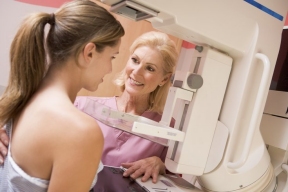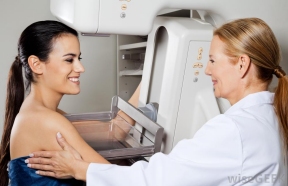
Concerned about your breast cancer risk? If you’re a woman younger than 45, you may not have to worry just yet. New guidelines for mammograms recently released by the American Cancer Society (ACS) took a major step back from the aggressive early and universal screening policies instituted in the United States almost two decades ago, The Washington Post reports.
Mammograms are X-rays of the chest used to pinpoint irregularities in breast tissue. For years, these screening tests got credit for saving millions of lives by helping doctors catch cancers at their earliest stages. But a growing body of research now suggests that these diagnostic tools are overused in the medical community, causing many women to be over-treated or misdiagnosed for benign or even nonexistent tumors. In the past, the ACS recommended women begin annual breast cancer screenings at age 40 as a preventive measure. Now, these experts are calling for women not to start yearly mammograms until age 45, and then switch to breast cancer screenings every two years beginning at age 55.

“They are saying that they realize we now need to think about the balance of benefits and harms for each individual when we’re making decisions about who to test,” said Nancy Keating, MD, a doctor in internal medicine and primary care at Brigham and Women’s Hospital, who wrote an editorial in JAMA accompanying the new guidelines. “It’s no longer as simple as saying everybody needs a mammogram.” Experts noted these new scaled-back guidelines only apply to women who don’t have specific risk factors for breast cancer, such as a family history of the disease or the BRCA1 or BRCA2 gene mutations that predispose women to developing the disease.










